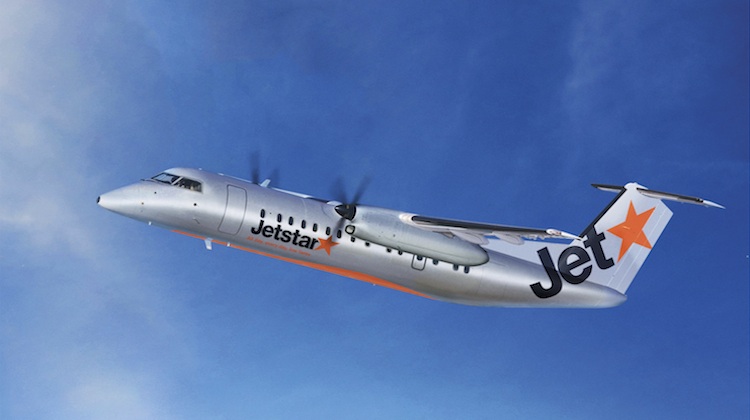
Air New Zealand looks set to receive some new competition on regional routes with Jetstar announcing plans to launch turboprop operations from December.
The Qantas-owned low-cost carrier said on Thursday it would introduce five 50-seat Bombardier Q300s to connect yet-to-be determined regional NZ centres to its current domestic NZ network of Auckland, Wellington, Christchurch, Queenstown and Dunedin.
QantasLink’s Eastern Airlines Australia will operate and manage the Q300 fleet in NZ, Jetstar said. Routes and frequencies are expected to be announced in September after consultations with regional airports, governments and business groups.
Hamilton, Rotorua, New Plymouth, Napier, Palmerston North, Nelson and Invercargill are listed as potential new destinations.
Qantas chief executive Alan Joyce, who made the announcement in Auckland alongside NZ Prime Minister John Key, said regional communities were “calling out for more choice and lower fares on regional routes in New Zealand because there’s a lack of competition”.
“We’re answering that call by launching Jetstar flights to regional New Zealand, making air travel more affordable for people who live outside the main centres and boosting tourism and the economies of these areas,” Joyce said in a statement.
“These new regional destinations will connect with the broader Qantas Group network, including both Qantas and Jetstar flying across the Tasman, to make these parts of New Zealand more accessible to international travellers.”
Jetstar currently has nine Airbus A320s flying domestically within NZ, across the Tasman and to the Pacific Islands. The first trans-Tasman flights started in 2005, while domestic services began in 2009. Currently, Jetstar has crew bases in at Auckland and Christchurch.
Jetstar group chief executive Jayne Hrdlicka promised fares would “drop considerably on the regional routes where we’ll operate”.
“We have made travel more affordable for New Zealanders flying between the main centres. Now we’re bringing our passion for affordable travel to thousands of new Jetstar travellers in the regions, whether they are flying for leisure or business,” Hrdlicka said.
Prime Minister Key said Jetstar’s announcement was good news.
“This will create jobs, mean cheaper fares and more choice for New Zealanders and our international visitors, and will provide a welcome boost to regional economies,” Key said in a statement.
“Extra air links will help connect regional New Zealand with the world and the main centres, making it easier to do business and for Kiwis and tourists to get around the country.”
Currently, Air NZ dominates NZ regional routes with its fleet of 17 Beechcraft 1900Ds, 11 ATR 72-500s, seven ATR 72-600s and 23 Bombardier Q300s.
In November 2014, Air NZ said it would move all regional flying to either 50-seat Dash 8 or 68-seat ATR 72 aircraft and withdraw all its 19-seat Beechcraft aircraft by August 2016 as part of a restructure of its regional operations.
The airline also introduced from February 2015 a new Regional Gotta Go domestic fare in response to concerns about the high price of last minute fares on regional services.
Available for purchase 90 minutes prior to departure, tickets on a regional route were available for a fixed price of NZ$169 for a single one-way sector and $249 for two or more one-way sectors.
Air NZ chief executive Christopher Luxon said in November the airline’s average regional airfare had fallen by two per cent over the past five years and the changes would keep further downward pressure on regional ticket prices.
Jetstar will join low-cost carriers such as Malindo in Malaysia, Nok Air in Thailand, Lion Group’s Wings Air in Indonesia and WestJet in Canada with turboprop operations. And Cebu Pacific Air in the Philippines announced an order for 16 ATR 72-600s and options for 10 more at the Paris Airshow to add to the eight of the type already in its fleet.
In November 2014, Qantas said it would shed four Q300s from its Australian operations as part of a cost-cutting move.










